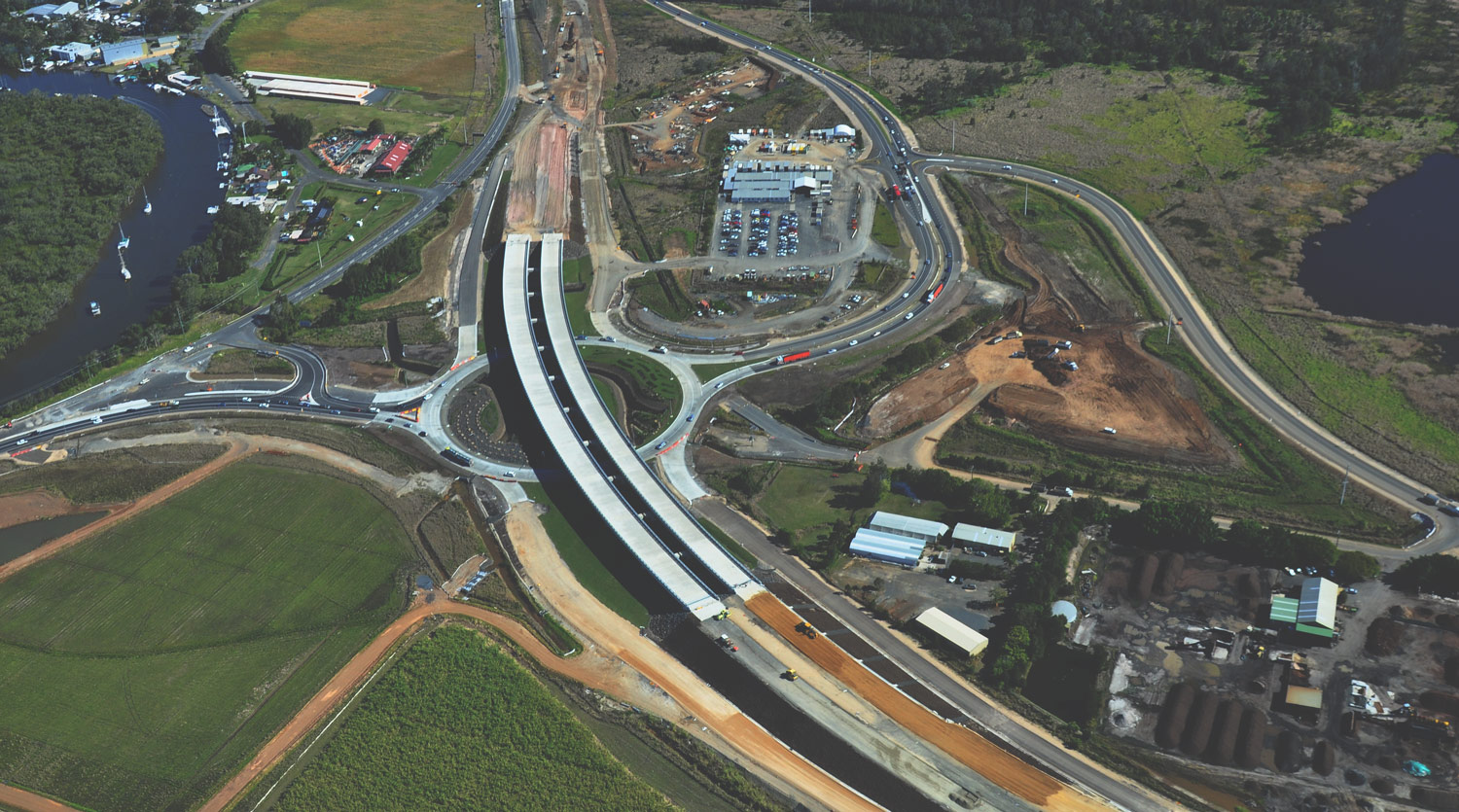
Innovation on the Ballina Bypass
The A$560 million Ballina Bypass project extends from the Bruxner Highway to Ross Lane and is part of the Pacific Highway upgrade between Hexham and the Queensland border. The Ballina Bypass introduced the vacuum consolidation technique to road construction in Australia, cutting construction times from an anticipated 15 years to about 3.5 years.
Dr Kelly worked with the University of Wollongong to develop new design methods for vacuum consolidation leading to a decade of advancing knowledge in the industry through lecturing, conducting workshops, extensive writing and researching on the complexities of soft soil engineering.
 Fundamental advances in research
Fundamental advances in research
The National Soft Soil Field Testing Facility (NFTF) allowed geotechnical engineers to extensively characterise Australian soft estuarine clay and to carry out monitored field tests that can be forecast or back-figured, using the extensive characterisation data, to improve engineering design methods. The NFTF held a numerical prediction symposium several years ago, and lessons learnt were published for the benefit of engineers. A number of these learnings have been adopted in Australian industry practice.
With more than 25 years of experience as a Geotechnical Engineer and academic, Dr Kelly is an active communicator of his findings. He explains how his work has mitigated the risks of building on soft soil, a vital issue as the industry gets to grips with the impact of climate change.
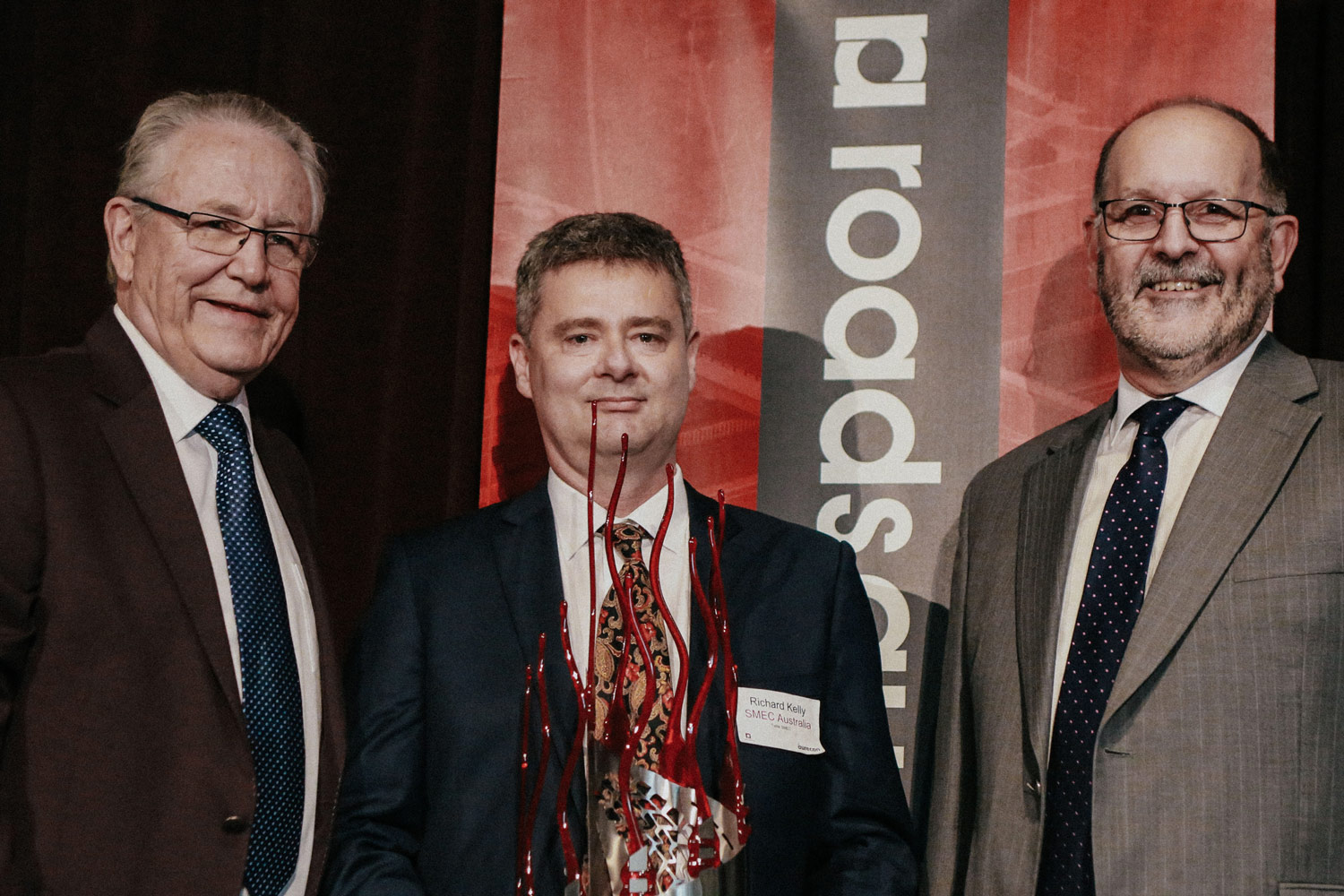 Q: What are the common misconceptions about soft soil that builders may have when building transport corridors like railroads, bridges and tunnels?
Q: What are the common misconceptions about soft soil that builders may have when building transport corridors like railroads, bridges and tunnels?
Often long-term conditions vary from expectations by some amount, and that can lead to pavement and structural distress – a question of risk. The behaviour of soft soil is also more uncertain than most geological materials.
Builders may think that they can come up with a win-win solution in soft soil – but the answer is usually no. You can’t have a low cost, high quality and quick outcome. Usually if you don’t want to spend money then it’ll take more time or lead to reduced quality. A shorter turnaround time with high quality is going to attract higher cost.
Q: What is an example of a common unanticipated problem with soft soil and how does it impact buildings?
The strength and stiffness of soft soil are highly non-uniform and vary with load. Permeability can vary by an order of magnitude which can speed up or slow down the construction. The material strength and stiffness are strain rate dependant, meaning that its performance depends on how fast the ground moves. It impacts how quickly buildings can be built and how much ground improvement is required to construct the building.
Q: Can you describe how your work prevented or mitigated any accidents / close shaves that you can disclose?
Typically, an instrumentation and monitoring plan is adopted with Soft Soil Engineering (SSE). The idea is to maximise the rate of construction whilst managing the risk of something falling down. For instance, on the Ballina Bypass project, we built embankments rapidly and pushed the boundaries of embankment stability to increase the pace of the construction, and used the instruments to prevent any failures occurring. The Ballina Bypass was one of the early projects on the Pacific Highway Upgrade in Australia. As with all major infrastructure projects, it was essential that this project met both technical requirements and project deadlines
Q: What solution have you proposed over your career that you are most proud of?
I am proud of the entire Ballina Bypass project. We encountered some significant challenges including building on soft soils with varying depths, which required different ground treatment technologies; aggressive environments affecting durability; traffic staging and management; and minimising flooding impacts from the bypass construction.
We used many and varied ground techniques to optimise the balance between time, cost, risk and quality, including vertical drains, vacuum consolidation, dry soil mixing, stone columns, dynamic replacements, and driven timber piles (individually or in combination). The ultimate outcome was that the project was delivered on budget, and six months early.
The vacuum consolidation technique was introduced on this project. This is a soft ground improvement process that reduces the quantity of “fill” materials while improving the stability of the fill during construction. At the Ballina Bypass, a concept design without vacuum consolidation would have taken an estimated 15 years of construction due to stability problems. We completed the design within three years using this technique
How vacuum consolidation works to stabilise soft soils on the construction of the Ballina Bypass
Q: How do climate change and sustainability issues impact soil conditions in the countries SMEC operates in?
An example is rising sea levels and increased rainfall, which will naturally increase flood levels. So, if we need to construct above flood levels, then the load on the ground will increase, which in turn increases settlement as well as the risk of instability and failures.
Optimisation of ground improvement solutions and infrastructure performance criteria will be required to protect existing infrastructure and to construct new infrastructure in a cost-effective manner. It’s important to manage this risk in the future, particularly with a flood plain in soft soil.
Q: Some coastal territories have plans to protect coastal defences by using dykes or polders along the eastern coastline. What do you think of this?
Dykes or reservoirs will help protect existing low-lying buildings but Hurricane Katrina showed that dykes can be breached and low lying areas flooded. Climate change will also contribute to more severe weather events. One alternative is to build up the low-lying areas – essentially land reclamation – which will trigger settlement and possibly instability in areas with soft soils. Another alternative is to build robust levees that can cope with extreme events. Which approach is adopted will depend on how each country views consequences of failure.
Q: In your view, what’s next for engineering on soft soils?
Construction instrumentation data could be processed using ‘big data’ Bayesian statistics techniques, which would enable engineers to make decisions earlier in the construction programme with greater confidence. The performance of the works will be known early enough to take advantage of better-than-expected behaviour and remediate worse-than-expected behaviour in the most cost-effective manner.
Related
insights
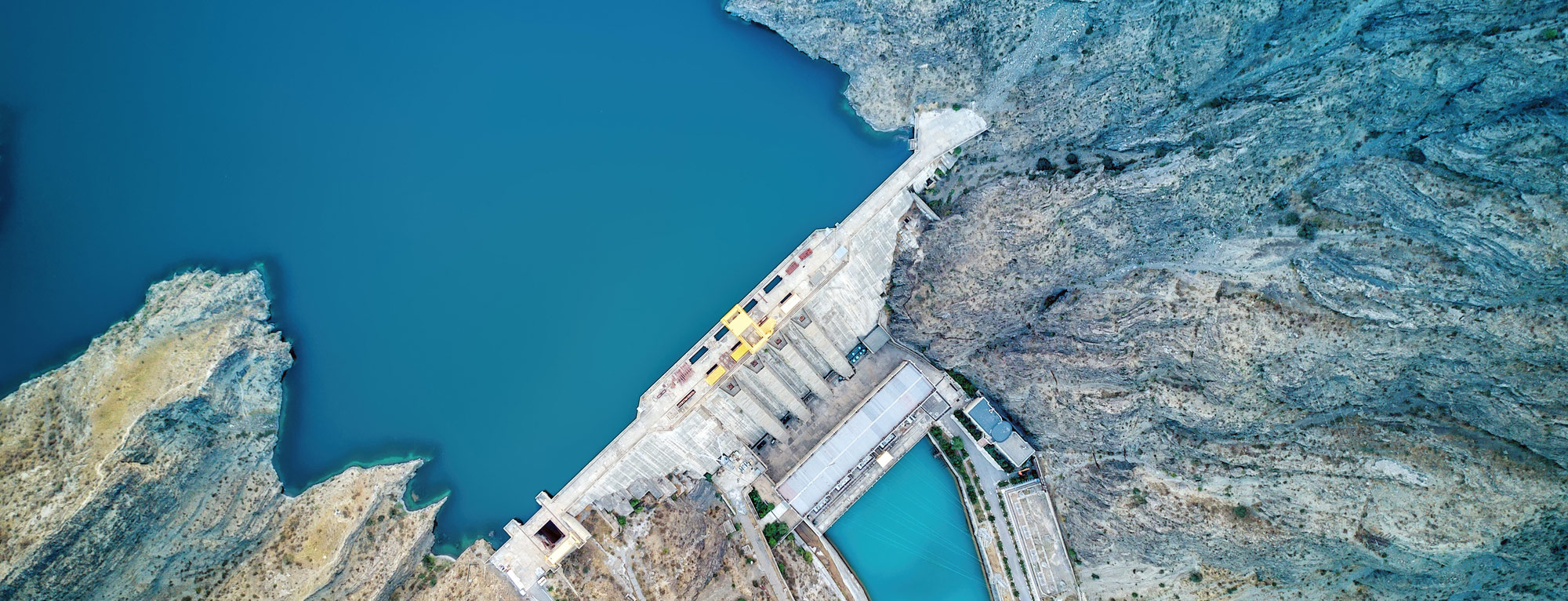 70 Years Forward: Water and hydropower
70 Years Forward: Water and hydropower
"The water and hydropower sectors have changed dramatically since our origins on the iconic Snowy Mountains Hydro Scheme 70 years ago in 1949, one of the largest and most complex hydroelectric schemes in the world. While technology has advanced rapidly, water is and will continue to be an essential and ever scarcer global resource."
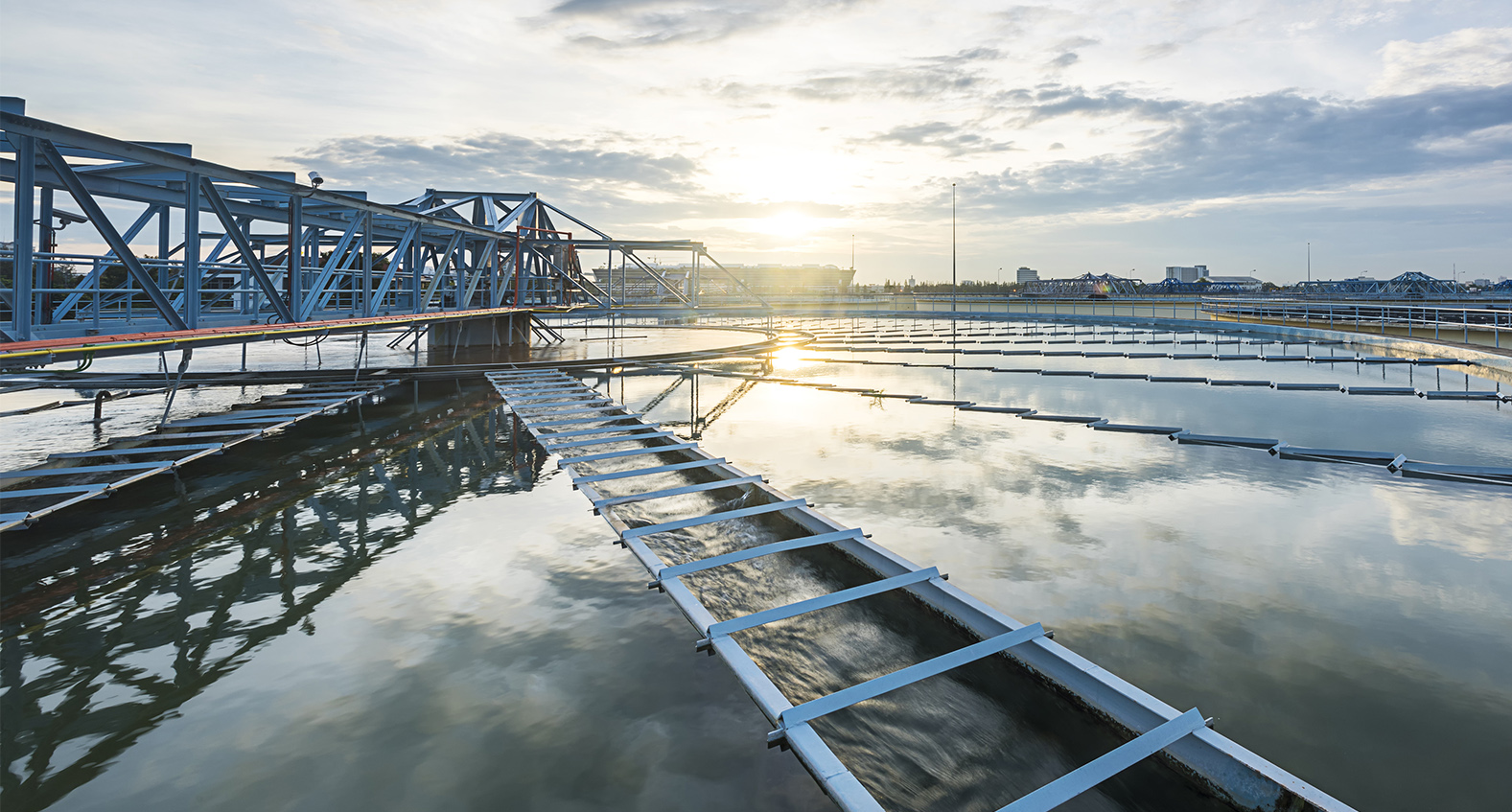 A circular economy for water: water demand and fit for purpose supply
A circular economy for water: water demand and fit for purpose supply
Australia, and the world, is increasingly seeing the effect of climate change on our water supply and security. Scarcity and drought are becoming more prevalent, placing pressure on the current water supply network, and communities are expecting better solutions. As we mark National Water Week in Australia and prepare for summer, it is time to discuss how we best utilise our existing water supplies and create a more resilient future.
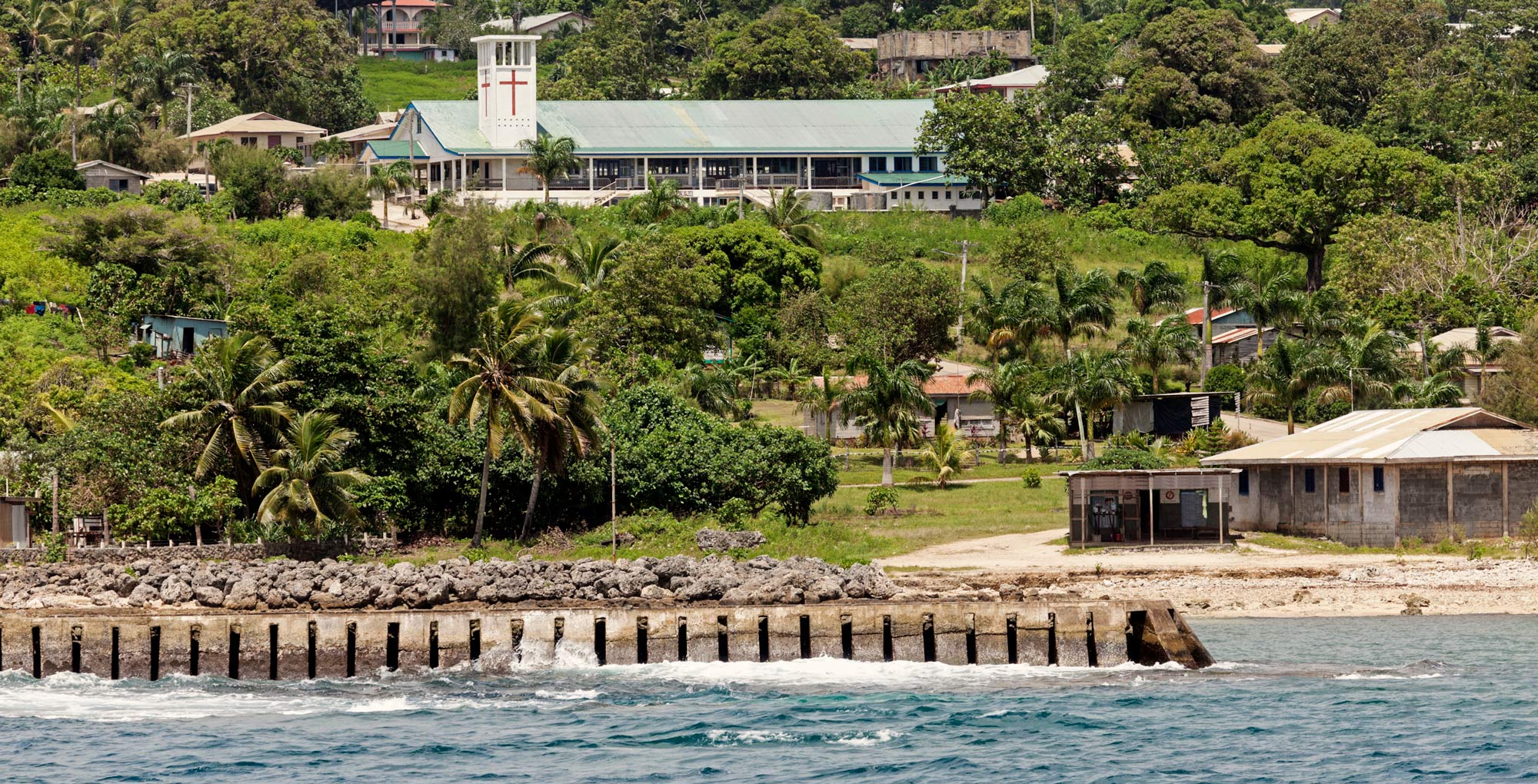 An engaging and entrepreneurial spirit leads to SMEC
An engaging and entrepreneurial spirit leads to SMEC
A career path leading to SMEC is often a diverse one – that was certainly true for Libby Paholski.
 Rainfall Runoff Modelling: Next Generation Analysis
Rainfall Runoff Modelling: Next Generation Analysis
Over the past few years Australia has witnessed extreme climate events from widespread drought to bushfires and severe flood events. Our Water Resources team strive to stay at the forefront of supporting a more climate resilient future for Australia. Through our research and techniques, we are looking to drive industry change to deliver future-proofed, climate resilient designs that improve flood risk management.




